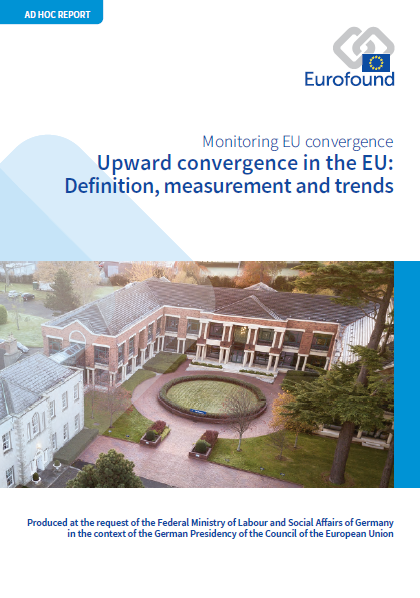
The uneven impact of the 2008–2013 economic crisis on Member States brought upward convergence to the fore in EU political debates. The focus was on orienting social policy towards getting the EU back on track, as encapsulated in the European Pillar of Social Rights. However, the meaning of the concept was unclear. Eurofound filled this gap, defining upward convergence as an improvement in performance alongside a reduction in disparities among Member States in a given socioeconomic indicator. Taking this definition as a starting point, this report illustrates the different ways that upward convergence is typically measured. It also summarises convergence patterns in six important socioeconomic indicators over a decade, from the start of the economic crisis to the height of the recovery. The analysis finds that upward convergence patterns are unstable and that Member States need to strengthen their resilience in the economic and social policy domains to achieve sustainable upward convergence.
The following list of graphs can be found in the report.
- Figure 1: Downward divergence in income inequality, 2008–2018, EU27
- Figure 2: Upward convergence in the employment rate, 2008–2018, EU27
- Figure 3: Downward divergence in the unemployment rate, 2008–2018, EU27
- Figure 4: Upward convergence in AROPE, 2008–2017, EU27
- Number of pages
-
20
- Reference nº
-
EF20043
- ISBN
-
978-92-897-2120-2
- Catalogue nº
-
TJ-01-20-555-EN-N
- DOI
-
10.2806/340977
- Permalink
- Produced at the request of
-
the Federal Ministry of Labour and Social Affairs of Germany in the context of the German Presidency of the Council of the European Union
Cite this publication
Eurofound (2020), Upward convergence in the EU: Definition, measurement and trends, Publications Office of the European Union, Luxembourg.